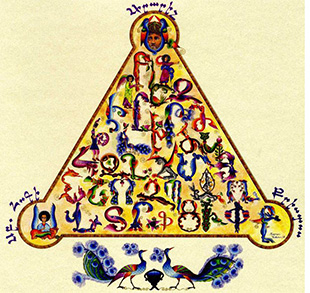
Armenian Alphabet
Armenian belongs to the Indo-European Language family and it forms its own branch with no close relatives. It is one of the oldest languages in the world.
In the late 4th century AD King Vramshapuh of Armenia asked Armenian cleric Mesrop Mashtots to create new alphabet for Armenian. Prior to this Armenian was written with “cuneiform” script, however it was not perfectly matching the language. In 405 AD Mashtots originally created 36 Armenian letters; currently there are 39 in total. Letters are unique and do not repeat any other alphabets existing today.
The first book translated into Armenian after the creation of Armenian alphabet was the Bible. In Armenian Bible is called “Astvatsashunch” which means breath of the God.
Armenian has two major varieties of the Armenian Language and each has its own dialects. The two major varieties are Eastern and Western Armenian.
Modern Eastern Armenian is currently spoken in the Republic of Armenia and Armenian communities around Armenia, Iran and Russia.
Modern Western Armenian is widely spread in Anatolia, Turkey, prior to the Armenian Genocide in 1915. Today, Armenian communities in the USA, Europe, Middle East, Australia and South America use Modern Western Armenian.
The Classical Armenian (Grabar) was used in the literature from 5th to 19th century and is still used in the Armenian Apostolic Church.
There are around 30,000 ancient Armenian manuscripts in the world and the majority (about 20,000 manuscripts) is preserved in Matenadaran,Yerevan. Matenadaran is an institute of ancient Manuscripts named after Mesrop Mashtots. The art of making Armenian manuscripts has ancient traditions; the manuscripts are unique and are of great esthetic value. Up to the 14th century Armenian books were handwritten on sheets of parchment made from the leather of domestic animals. These manuscripts were always considered to be sacred and were protected and saved from wars and aggressors. People would risk their lives to saves those historical manuscripts. Each sheet of the largest saved Armenian manuscript is 70 cm long and 55.5 cm wide.
Other than Matenadaran major collections of Armenian manuscripts are preserved in the library of Armenian Patriarchy in Jerusalem (about 4000) the Mkhitaryan Brotherhood in Venice (about 4000), and in Vienna (about 2500).